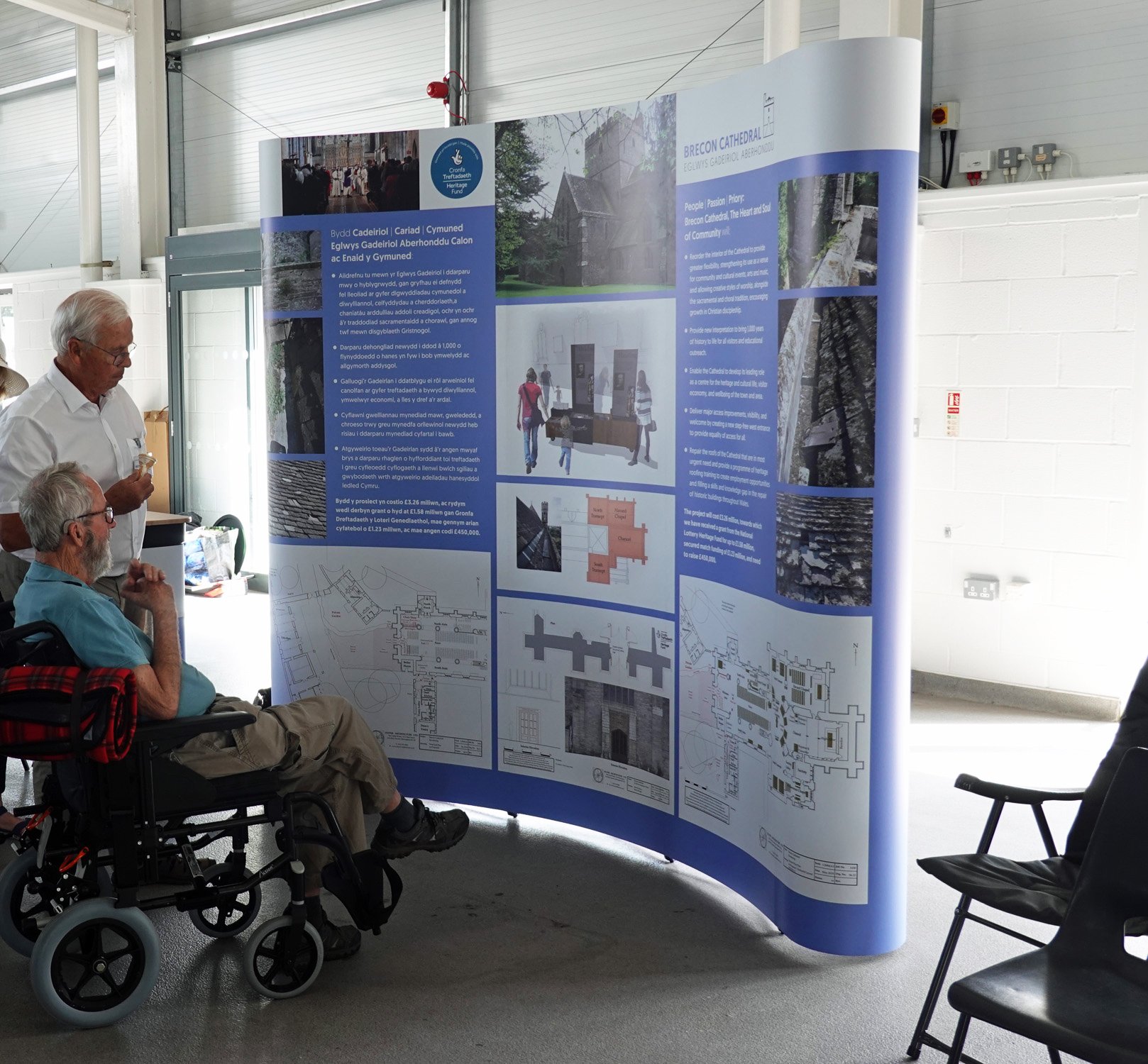
People | Passion | Priory
Access and New Entrance
The most serious impediment to the enjoyment of the Cathedral is access. As access groups have been advising us for some time, the current north and south entrances are not at all friendly to those with mobility problems, the carrying of coffins, nor are they particularly welcoming with both having two sets of heavy doors (the images and plans below highlight the problems). Clicking on any of the plans opens a larger version.
This was something we need to resolve since we and the National Lottery realise that we cannot have a building that effectively excludes some of our users. Nobody would fund us if that were the outcome. Moreover, we were told by access groups they wanted dignity upon entering: no more chair lifts prone to breakage, no more steps they have to struggle with, and no more leaving their able-bodied friends while they have to find their own way in; they want equal access and equal dignity. This was the challenge we took on board.
Our first task was to look at existing doors, especially the north and south entrances, and see if there was a way of modifying them to allow step free access for all. We commissioned an access survey to look at these and all other options for the entrance, including several ideas that were suggested at our open days and presentations. The report can be read here. From that report, we developed a matrix showing all the options and analysing the pros and cons of each. This report can be read here. Both documents concluded that the only way of satisfying our objective was to make a new entrance through the west wall, a fourteenth-century construction (below). It was a bold proposition.
The first thing we did was to speak to Cadw, the National Parks, and other heritage bodies to see if this was something they would even contemplate supporting. We set out our approach in considerable detail, showing them the work we had done on alternatives and setting out our justification carefully. They immediately said yes, in principle, the benefit of the new entrance outweighs the harm done to the structure of the wall. We have now submitted a pre-planning application with their blessing, which will focus on the form and design of the new west door.
In addition, we need to carry out work in the existing vestry lobby to allow non-able-bodied visitors to access the toilets. With no longer needing the existing south entrance (which will become staff only), this can be achieved by a gentle ramp. The plan below shows this and also the alterations needed externally to the Close to allow for the new door.
Although everything remains at an early, pre-planning stage, our Project Architect has researched extensively and drawn up some designs for the door. He is keen to keep the new door in keeping with the Cathedral but not to try and make it look faux medieval. His plan and latest design are shown below but these are just suggestions at this stage; they may change when we have more reaction and feedback. The door will open automatically when visitors approach.
Internally, there will have to be a new porch lobby to stop draughts. The latest plan is shown below and, with the permission of Buckingham Palace, we would like the door to celebrate the visit of His Majesty the King and Her Majesty the Queen in July 2023. Internally, some memorials will need to be moved (old photographs show these are modern additions) and, to make for a more pleasing symmetry, the font will be moved in line with the existing entrances and the trip-hazard of the raised paving removed. Improvements, such as handrails, will also be made to the north door, which will be retained. This would have been, in the days of the Priory Church, the main public access.
It has not been an easy decision to advocate such a serious intervention in our medieval fabric, but this is a working building not a museum, and we need to move with the times and the provision it demands for equality. In the medieval period, non-able-bodied pilgrims would have been carried by others to receive the healing offered at the shrine church. They didn’t need an access for use by all; we do.







